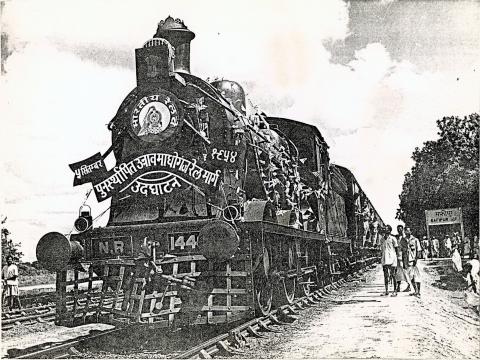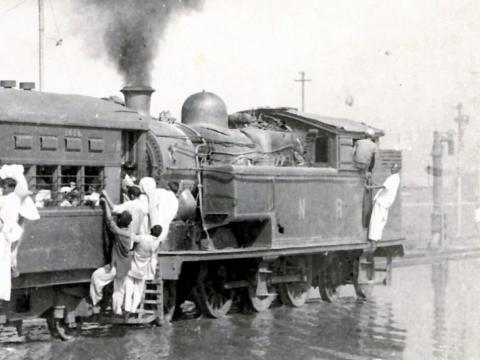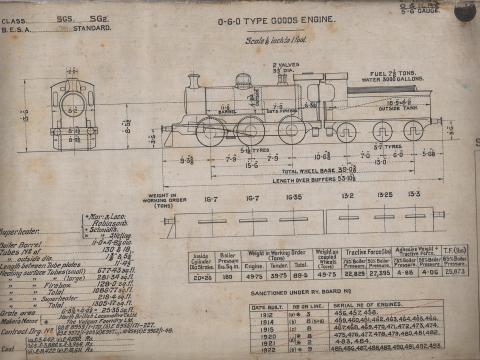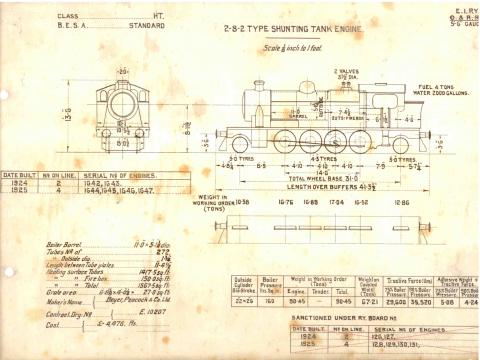A sub-committee of the British Engineering Standards Committee was set up for standardising Locomotives early in the 20th Century. Its first report came out in 1903. Their standards were built around the common locomotive types then in use. The Passenger Locomotive a 4-4-0 and goods with a 0-6-0 wheel arrangement and a common boiler design with working pressure of 180 lb. In the next few years additional designs for heavier locomotives were developed. The designs that came out at the time came to be known as the BESA (British Engineering Standards Association) designs and they were in use on Indian Railways till the 1970’s. Some characteristics of BESA designs are given below:
| Type | Grate Area | Engine Weight | Class Code |
Standard Passenger | 4-4-0 | 25.3 | 52 | SP |
Standard Goods | 0-6-0 | 25.3 | 49 | SG |
Passenger Tank | 2-6-4T | 25.3 | 76.5 | PT |
Heavy Passenger | 4-6-0 | 32 | 69 | HP |
Heavy Goods | 2-8-0 | 32 | 71.5 | HG |
Heavy Tank | 2-8-2T | 37 | 90.5 | HT |
Later when these locomotives were manufactured with superheaters a suffix ‘S’ was added to the type code e.g. ‘SPS’ or when the locomotive was converted to superheating a suffix ‘C’ was attached e.g. ‘SGC’.









